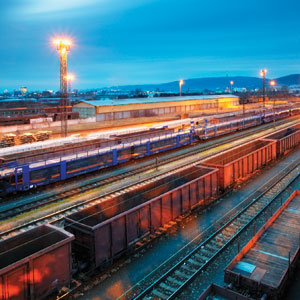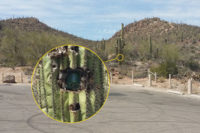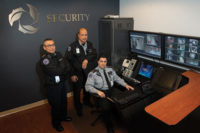
|
Powerpoint presentations and executive briefings to show how security technology implementations can benefit an enterprise. What are other ways that you can communicate use cases and savings to get buy-in from other departments? According to Matt Bodi, IT Manager at Taminco USA, you should start during the RIP process.
"Many departments can find value in having cameras,” says Bodi. “You should let other department leaders know your new or even potential system’s capabilities and resources before project completion, or even in project development, so your installer can take their needs into account.”
An upgrade from the previous analog security infrastructure at Taminco’s factories in St. Gabriel, Louisiana, and Pace, Florida, led Bodi to add a Milestone open-platform video management system to unite the disparate technologies on site, include a variety of IP surveillance cameras from multiple manufacturers, tripling the number of cameras on-site. “It was an easy sell to switch to IP,” he says. “By leveraging existing IT networks with IP, we’re using our existing infrastructure and streamlining our security systems on that same network infrastructure, which simplifies maintenance.
“Now, as needs and analytics evolve, we have room to grow,” he adds. “It’s always possible to store more data online or add analytic capabilities – it’s just a matter of disk space.”
The open-platform system also allows Bodi to pick out best-of-breed contamination- and explosion-proof cameras that are required for compliance in certain areas of the alkylamines and derivatives production business’s facilities.
Originally, the cameras on site were used exclusively for security, but over time, departments began to leverage the enterprise’s investment in surveillance to aid in productivity and safety.
For example, the sites are used for the production, storage and loading of chemicals used for feed additives, water treatment, personal care products and more. Taminco must follow strict guidelines from multiple government agencies, including one stating that there must be a technician no more than 25 feet from a load. However, Bodi says, one agency has granted permission to use cameras instead of a human supervisor next to the loading zone. This allows for added productivity and a reduction in the necessary workforce in loading zones while still staying in compliance with regulations.
Also, the cameras enable Bodi and his peers to keep employees as safe as possible during incidents – “In one case, a rail company had punctured a railcar on our property,” he says. “This spilled a hazardous chemical. By using the cameras, we could remotely monitor the spill and clean-up without requiring additional employees or supervisors on-site. This minimized our exposure to the chemical.”
Supervisors within the company can even monitor and investigate potential problems using the cameras – “There is significant value in our footage,” says Bodi. “During an incident, it would be a huge value-add to have eyes over it as it occurs, which helps pinpoint what went wrong. This is a large facility – we can’t have eyes everywhere, but we can add cameras. This ability has generated more interest in using cameras to prevent issues, not just investigate them.”
Using cameras can provide a viable alternative, when combined with analytics, to bypass other infrastructure-heavy tools, such as adding fiberoptic cable to perimeter fencing to detect intruders or trenching for driveway sensors or barricades, giving Taminco and the security system an overall smaller footprint.
“On average, we get one request a month for footage from varying departments, either to investigate incidents or just review processes,” says Bodi. “And the IT department is still guiding end users through this, but eventually, they could even retrieve the video themselves.”
Green Security Officers, A Great New Concept
By Eric Crabb, Vice President -Service Integration, ABM Security Services, Inc.
In the security industry, a key success factor is the ability to sense changing requirements and adapt accordingly. For most security people this means recommending the latest access control, visitor management or secure identity technology. And, this is excellent since there continue to be much advancement in these areas.
What about other kinds of technology or even services – in energy efficiency for example? Just think how helpful it would be to also be able to offer “green” or sustainability solutions as well, either via in-house capabilities or by partnering with other companies.
Green Guarding is a concept through which security officers on patrol at a building are trained to be knowledgeable in energy efficiency and sustainability. Security officers are in a unique position to see most areas of a building, so they can identify areas where companies can be greener.
For example, while patrolling a company’s perimeter and parking lot, an astute security officer might notice that the lighting systems are old and therefore are not very bright while drawing a lot of electricity. He or she could recommend a new light emitting diode (LED) lighting system for the parking lot that would greatly enhance security while cutting energy costs.
The City of Oakland, California, transformed an antiquated parking garage at 1250 Martin Luther King Way into a safer, ultramodern energy efficient facility by installing high-efficiency fluorescent and LED lighting, and wireless lighting controls that reduced energy use. The energy saving enhancements also allowed for the installation of several EV charging stations, without the need to upgrade the facility’s existing electrical system. The result was a dramatic 45-percent energy savings, and new electronic vehicle (EV) charging stations.
While inside buildings, security officers can spot other ways to be green or sustainable, too. For example an officer on patrol might identify areas where (HVAC) systems are not working properly or could be upgraded.
By knowing what is newly available, a Green Guarding minded security officer could recommend green solutions wherever he patrols.



